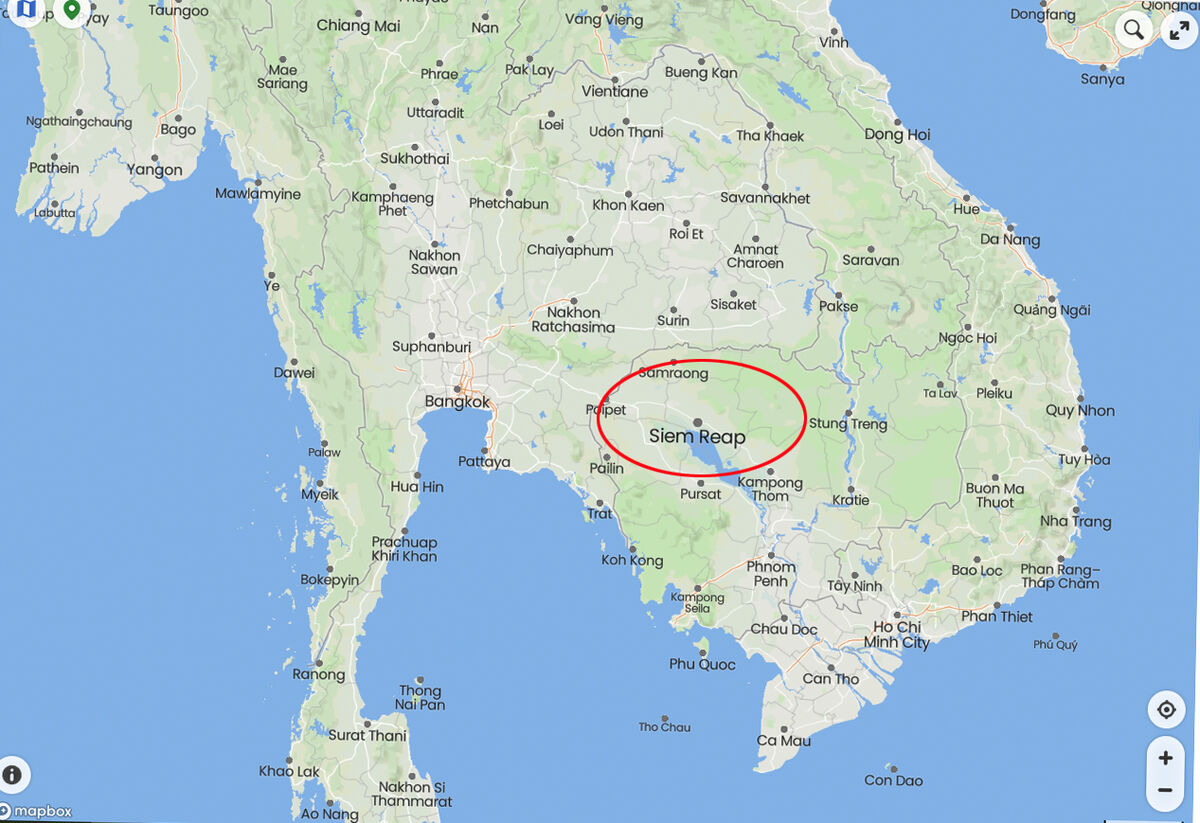Cambodia: Siem Reap Part 3 - The Village Children
Dec 27, 2022 16:12:53 #
Throughout our travels, I always loved taking pictures of the kids who are always anxious to pose - much like our own grandchildren. The Cambodian kids were no exception, and we noticed the differences in facial features from the Vietnamese kids despite being geographically close. We were told by our local guide that most of the people in this particular village were Khmer, and traced their ancestry to Java in the Pacific Islands.
The Khmer people (Khmer: ជនជាតិខ្មែរ, Chônchéatĕ Khmêr [cɔnciət kʰmae]) are a Southeast Asian ethnic group native to Cambodia. They comprise over 90% of Cambodia's population of 17 million. They speak the Khmer language, which is part of the larger Austroasiatic-language family found in parts of Southeast Asia (including Vietnam, Laos and Malaysia), parts of central, eastern, and northeastern India, parts of Bangladesh in South Asia, in parts of Southern China and numerous islands in the Indian Ocean.
The majority of the Khmers follow Theravada Buddhism. Significant populations of Khmers reside in adjacent areas of Thailand (Northern Khmer) and the Mekong Delta region of neighboring Vietnam (Khmer Krom), while there are over one million Khmers in the Khmer diaspora living mainly in France, the United States, and Australia.
The majority of the world's Khmers live in Cambodia, the population of which is over 90% Khmers There are also significant Khmer populations native to Thailand and Vietnam. In Thailand, there are over one million Khmers (known as the Khmer Surin), mainly in Surin (Sorin), Buriram (Borei Rom) and Sisaket (Srei Saket) provinces. Estimates for the number of the Khmers in Vietnam (known as the Khmer Krom) vary from the 1.3 million given by government data to 7 million advocated by the Khmers Kampuchea-Krom Federation.
The Khmers, an Austroasiatic people, are one of the oldest ethnic groups in the area, having filtered into Southeast Asia from southern China, possibly Yunnan, or from Northeast India around the same time as the Mon, who settled further west on the Indochinese Peninsula and to whom the Khmer are ancestrally related. Most archaeologists and linguists, and other specialists like Sinologists and crop experts, believe that they arrived no later than 2000 BCE (over four thousand years ago) bringing with them the practice of agriculture and in particular the cultivation of rice. This region is also one of the first places in the world to use bronze. They were the builders of the later Khmer Empire, which dominated Southeast Asia for six centuries beginning in 802, and now form the mainstream of political, cultural, and economic Cambodia.
The Khmers developed the Khmer alphabet, which in turn gave birth to the later Thai and Lao alphabets. The Khmers are considered by archaeologists and ethnologists to be indigenous to the contiguous regions of Isan, southern Laos, Cambodia and South Vietnam. That is to say the Cambodians have historically been a lowland people who lived close to one of the tributaries of the Mekong River. The reason they migrated into Southeast Asia is not well understood, but scholars believe that Austroasiatic speakers were pushed south by invading Tibeto-Burman speakers from the north as evident by Austroasiatic vocabulary in Chinese, because of agricultural purposes as evident by their migration routes along major rivers, or a combination of these and other factors.
The Khmer are considered a part of Greater India, owing to them adopting Indian culture, traditions and religious identities. The first powerful trading kingdom in Southeast Asia, the Kingdom of Funan, was established in southeastern Cambodia and the Mekong Delta in the first century, although extensive archaeological work in Angkor Borei District near the modern Vietnamese border has unearthed brickworks, canals, cemeteries and graves dating to the fifth century BCE.
During the Funan period (1st century - sixth century CE) the Khmer also acquired Buddhism, the concept of the Shaiva imperial cult of the devaraja and the great temple as a symbolic world mountain. The rival Khmer Chenla Kingdom emerged in the fifth century and later conquered the Kingdom of Funan. Chenla was an upland state whose economy was reliant on agriculture whereas Funan was a lowland state with an economy dependent on maritime trade.
These two states, even after conquest by Chenla in the sixth century, were constantly at war with each other and smaller principalities. During the Chenla period (5th-8th century), Khmers left the world's earliest known zero in one of their temple inscriptions. Only when King Jayavarman II declared an independent and united Cambodia in 802 was there relative peace between the two lands, upper and lowland Cambodia.
Jayavarman II (802–830), revived Khmer power and built the foundation for the Khmer Empire, founding three capitals—Indrapura, Hariharalaya, and Mahendraparvata—the archeological remains of which reveal much about his times. After winning a long civil war, Suryavarman I (reigned 1002–1050) turned his forces eastward and subjugated the Mon kingdom of Dvaravati. Consequently, he ruled over the greater part of present-day Thailand and Laos, as well as the northern half of the Malay Peninsula. This period, during which Angkor Wat was constructed, is considered the apex of Khmer civilization.
During the second half of the twentieth century, the political situation in Cambodia became chaotic. King Norodom Sihanouk (later, Prince, then again King), proclaimed Cambodia's independence in 1949 (granted in full in 1953) and ruled the country until March 18, 1970, when he was overthrown by General Lon Nol, who established the Khmer Republic. On April 17, 1975, Khmer Rouge, who under the leadership of Pol Pot combined Khmer nationalism and extreme Communism, came to power and virtually destroyed the Cambodian people, their health, morality, education, physical environment, and culture in the Cambodian genocide.
On January 7, 1979, Vietnamese forces ousted the Khmer Rouge. After more than ten years of painfully slow rebuilding, with only meager outside help, the United Nations intervened resulting in the Paris Peace Accord on October 23, 1992, and created conditions for general elections in May 1993, leading to the formation of the current government and the restoration of Prince Sihanouk to power as King in 1993. The Khmer Rouge continued to control portions of western and northern Cambodia until the late 1990s, when they surrendered to government forces in exchange for either amnesty or re-adjustment for positions into the Cambodian government.
In the 21st century, Cambodia's economy has grown faster than that of any other country in Asia except for China and India. Today, post-conflict Cambodia exports over $5 billion worth of clothing, mainly to the United States and the European Union, is one of the top ten exporters of rice in the world, and has seen international tourist arrivals balloon from less than 150,000 in 2000 to over 4.2 million in 2013.
The culture of the ethnic Khmers is fairly homogeneous throughout their geographic range. Regional dialects exist,but are mutually intelligible. The standard is based on the dialect spoken throughout the Central Plain, a region encompassed by the northwest and central provinces. The varieties of Khmer spoken in this region are representative of the speech of the majority of the population. A unique and immediately recognizable dialect has developed in Phnom Penh that, due to the city's status as the national capital, has been modestly affected by recent French and Vietnamese influence.
The majority of the Cambodians live in rural villages either as rice farmers or fishermen. Their life revolves around the Wat (temple) and the various Buddhist ceremonies throughout the year. However, if Cambodians become ill, they will frequently see a kru khmae (shaman/healer), whom they believe can diagnose which of the many spirits has caused the illness and recommend a course of action to propitiate the offended spirit, thereby curing the illness. The kru khmae is also learned in herb lore and is often sought to prepare various "medicines" and potions or for a magical tattoo, all believed to endow one with special prowess and ward off evil spirits or general bad luck. Khmer beliefs also rely heavily on astrology, a remnant of Hinduism. A fortune teller, called hao-ra (astrologists) or kru teay in Khmer, is often consulted before major events, like choosing a spouse, beginning an important journey or business venture, setting the date for a wedding and determining the proper location for building new structures.
The Khmer people are genetically closely related to other Southeast Asian populations. They show strong genetic relation to other Austroasiatic people in Southeast Asia and East Asia and have a minor genetic influence from Indian people. Cambodians trace ~16% of their ancestry to a Eurasian population that is equally related to both Europeans and East Asians, while the remaining 84% of their ancestry is related to other Southeast Asians, particularly to a source similar to the Dai people. Another study suggests that Cambodians trace ~19% of their ancestry to a similar Eurasian population related to modern-day Central Asians, South Asians, and East Asians, while the remaining 81% of their ancestry is related specifically to modern-day Dai and Han people.
The genetic testing website 23andme groups Khmer people under the "Indonesian, Khmer, Thai & Myanmar" reference population. This reference population contains people who have had recent ancestors from Cambodia, Indonesia, Laos, Malaysia, Myanmar and Thailand. Hideo Matsumoto, professor emeritus at Osaka Medical College tested Gm types, genetic markers of immunoglobulin G, of Khmer people for a 2009 study. The study found that the Gm afb1b3 is a southern marker gene possibly originating in southern China and found at high frequencies across southern China, Southeast Asia, Taiwan, Sri Lanka, Bangladesh, Nepal, Assam and parts of the Pacific Islands. The study found that the average frequency of Gm afb1b3 was 76.7% for the Khmer population.
https://en.wikipedia.org/wiki/Khmer_people
Fo more images of Siem Reap and narrative, please see my previous posts:
https://www.uglyhedgehog.com/t-760858-1.html#13633063
https://www.uglyhedgehog.com/t-761100-1.html#13638505
I hope you enjoy these!
Mark
The Khmer people (Khmer: ជនជាតិខ្មែរ, Chônchéatĕ Khmêr [cɔnciət kʰmae]) are a Southeast Asian ethnic group native to Cambodia. They comprise over 90% of Cambodia's population of 17 million. They speak the Khmer language, which is part of the larger Austroasiatic-language family found in parts of Southeast Asia (including Vietnam, Laos and Malaysia), parts of central, eastern, and northeastern India, parts of Bangladesh in South Asia, in parts of Southern China and numerous islands in the Indian Ocean.
The majority of the Khmers follow Theravada Buddhism. Significant populations of Khmers reside in adjacent areas of Thailand (Northern Khmer) and the Mekong Delta region of neighboring Vietnam (Khmer Krom), while there are over one million Khmers in the Khmer diaspora living mainly in France, the United States, and Australia.
The majority of the world's Khmers live in Cambodia, the population of which is over 90% Khmers There are also significant Khmer populations native to Thailand and Vietnam. In Thailand, there are over one million Khmers (known as the Khmer Surin), mainly in Surin (Sorin), Buriram (Borei Rom) and Sisaket (Srei Saket) provinces. Estimates for the number of the Khmers in Vietnam (known as the Khmer Krom) vary from the 1.3 million given by government data to 7 million advocated by the Khmers Kampuchea-Krom Federation.
The Khmers, an Austroasiatic people, are one of the oldest ethnic groups in the area, having filtered into Southeast Asia from southern China, possibly Yunnan, or from Northeast India around the same time as the Mon, who settled further west on the Indochinese Peninsula and to whom the Khmer are ancestrally related. Most archaeologists and linguists, and other specialists like Sinologists and crop experts, believe that they arrived no later than 2000 BCE (over four thousand years ago) bringing with them the practice of agriculture and in particular the cultivation of rice. This region is also one of the first places in the world to use bronze. They were the builders of the later Khmer Empire, which dominated Southeast Asia for six centuries beginning in 802, and now form the mainstream of political, cultural, and economic Cambodia.
The Khmers developed the Khmer alphabet, which in turn gave birth to the later Thai and Lao alphabets. The Khmers are considered by archaeologists and ethnologists to be indigenous to the contiguous regions of Isan, southern Laos, Cambodia and South Vietnam. That is to say the Cambodians have historically been a lowland people who lived close to one of the tributaries of the Mekong River. The reason they migrated into Southeast Asia is not well understood, but scholars believe that Austroasiatic speakers were pushed south by invading Tibeto-Burman speakers from the north as evident by Austroasiatic vocabulary in Chinese, because of agricultural purposes as evident by their migration routes along major rivers, or a combination of these and other factors.
The Khmer are considered a part of Greater India, owing to them adopting Indian culture, traditions and religious identities. The first powerful trading kingdom in Southeast Asia, the Kingdom of Funan, was established in southeastern Cambodia and the Mekong Delta in the first century, although extensive archaeological work in Angkor Borei District near the modern Vietnamese border has unearthed brickworks, canals, cemeteries and graves dating to the fifth century BCE.
During the Funan period (1st century - sixth century CE) the Khmer also acquired Buddhism, the concept of the Shaiva imperial cult of the devaraja and the great temple as a symbolic world mountain. The rival Khmer Chenla Kingdom emerged in the fifth century and later conquered the Kingdom of Funan. Chenla was an upland state whose economy was reliant on agriculture whereas Funan was a lowland state with an economy dependent on maritime trade.
These two states, even after conquest by Chenla in the sixth century, were constantly at war with each other and smaller principalities. During the Chenla period (5th-8th century), Khmers left the world's earliest known zero in one of their temple inscriptions. Only when King Jayavarman II declared an independent and united Cambodia in 802 was there relative peace between the two lands, upper and lowland Cambodia.
Jayavarman II (802–830), revived Khmer power and built the foundation for the Khmer Empire, founding three capitals—Indrapura, Hariharalaya, and Mahendraparvata—the archeological remains of which reveal much about his times. After winning a long civil war, Suryavarman I (reigned 1002–1050) turned his forces eastward and subjugated the Mon kingdom of Dvaravati. Consequently, he ruled over the greater part of present-day Thailand and Laos, as well as the northern half of the Malay Peninsula. This period, during which Angkor Wat was constructed, is considered the apex of Khmer civilization.
During the second half of the twentieth century, the political situation in Cambodia became chaotic. King Norodom Sihanouk (later, Prince, then again King), proclaimed Cambodia's independence in 1949 (granted in full in 1953) and ruled the country until March 18, 1970, when he was overthrown by General Lon Nol, who established the Khmer Republic. On April 17, 1975, Khmer Rouge, who under the leadership of Pol Pot combined Khmer nationalism and extreme Communism, came to power and virtually destroyed the Cambodian people, their health, morality, education, physical environment, and culture in the Cambodian genocide.
On January 7, 1979, Vietnamese forces ousted the Khmer Rouge. After more than ten years of painfully slow rebuilding, with only meager outside help, the United Nations intervened resulting in the Paris Peace Accord on October 23, 1992, and created conditions for general elections in May 1993, leading to the formation of the current government and the restoration of Prince Sihanouk to power as King in 1993. The Khmer Rouge continued to control portions of western and northern Cambodia until the late 1990s, when they surrendered to government forces in exchange for either amnesty or re-adjustment for positions into the Cambodian government.
In the 21st century, Cambodia's economy has grown faster than that of any other country in Asia except for China and India. Today, post-conflict Cambodia exports over $5 billion worth of clothing, mainly to the United States and the European Union, is one of the top ten exporters of rice in the world, and has seen international tourist arrivals balloon from less than 150,000 in 2000 to over 4.2 million in 2013.
The culture of the ethnic Khmers is fairly homogeneous throughout their geographic range. Regional dialects exist,but are mutually intelligible. The standard is based on the dialect spoken throughout the Central Plain, a region encompassed by the northwest and central provinces. The varieties of Khmer spoken in this region are representative of the speech of the majority of the population. A unique and immediately recognizable dialect has developed in Phnom Penh that, due to the city's status as the national capital, has been modestly affected by recent French and Vietnamese influence.
The majority of the Cambodians live in rural villages either as rice farmers or fishermen. Their life revolves around the Wat (temple) and the various Buddhist ceremonies throughout the year. However, if Cambodians become ill, they will frequently see a kru khmae (shaman/healer), whom they believe can diagnose which of the many spirits has caused the illness and recommend a course of action to propitiate the offended spirit, thereby curing the illness. The kru khmae is also learned in herb lore and is often sought to prepare various "medicines" and potions or for a magical tattoo, all believed to endow one with special prowess and ward off evil spirits or general bad luck. Khmer beliefs also rely heavily on astrology, a remnant of Hinduism. A fortune teller, called hao-ra (astrologists) or kru teay in Khmer, is often consulted before major events, like choosing a spouse, beginning an important journey or business venture, setting the date for a wedding and determining the proper location for building new structures.
The Khmer people are genetically closely related to other Southeast Asian populations. They show strong genetic relation to other Austroasiatic people in Southeast Asia and East Asia and have a minor genetic influence from Indian people. Cambodians trace ~16% of their ancestry to a Eurasian population that is equally related to both Europeans and East Asians, while the remaining 84% of their ancestry is related to other Southeast Asians, particularly to a source similar to the Dai people. Another study suggests that Cambodians trace ~19% of their ancestry to a similar Eurasian population related to modern-day Central Asians, South Asians, and East Asians, while the remaining 81% of their ancestry is related specifically to modern-day Dai and Han people.
The genetic testing website 23andme groups Khmer people under the "Indonesian, Khmer, Thai & Myanmar" reference population. This reference population contains people who have had recent ancestors from Cambodia, Indonesia, Laos, Malaysia, Myanmar and Thailand. Hideo Matsumoto, professor emeritus at Osaka Medical College tested Gm types, genetic markers of immunoglobulin G, of Khmer people for a 2009 study. The study found that the Gm afb1b3 is a southern marker gene possibly originating in southern China and found at high frequencies across southern China, Southeast Asia, Taiwan, Sri Lanka, Bangladesh, Nepal, Assam and parts of the Pacific Islands. The study found that the average frequency of Gm afb1b3 was 76.7% for the Khmer population.
https://en.wikipedia.org/wiki/Khmer_people
Fo more images of Siem Reap and narrative, please see my previous posts:
https://www.uglyhedgehog.com/t-760858-1.html#13633063
https://www.uglyhedgehog.com/t-761100-1.html#13638505
I hope you enjoy these!
Mark
The kids always follow Gail
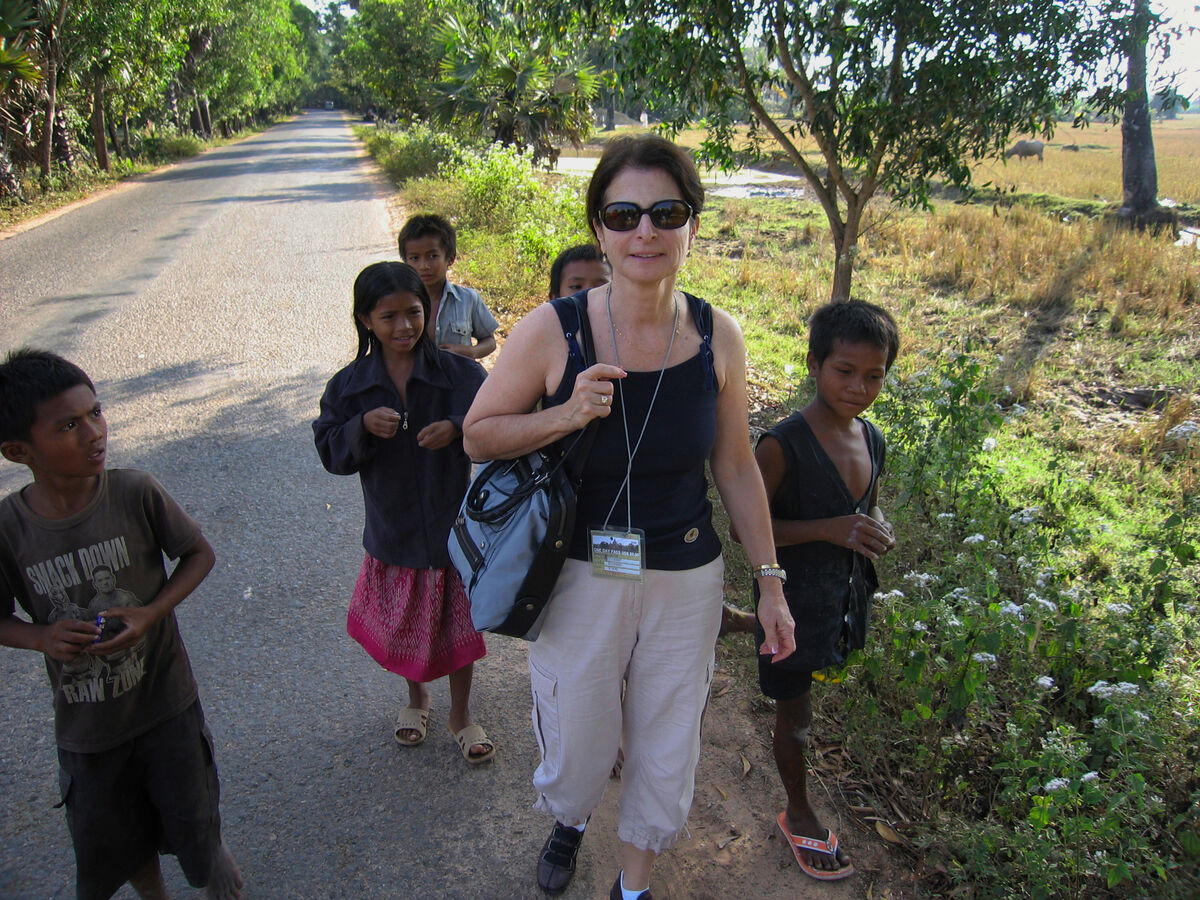
(Download)
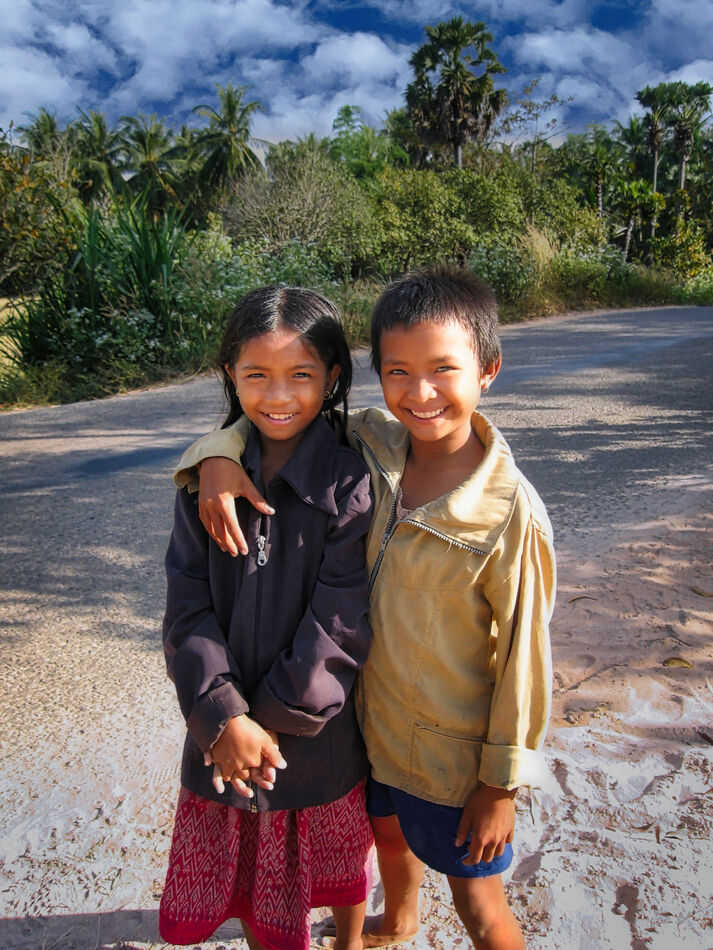
(Download)
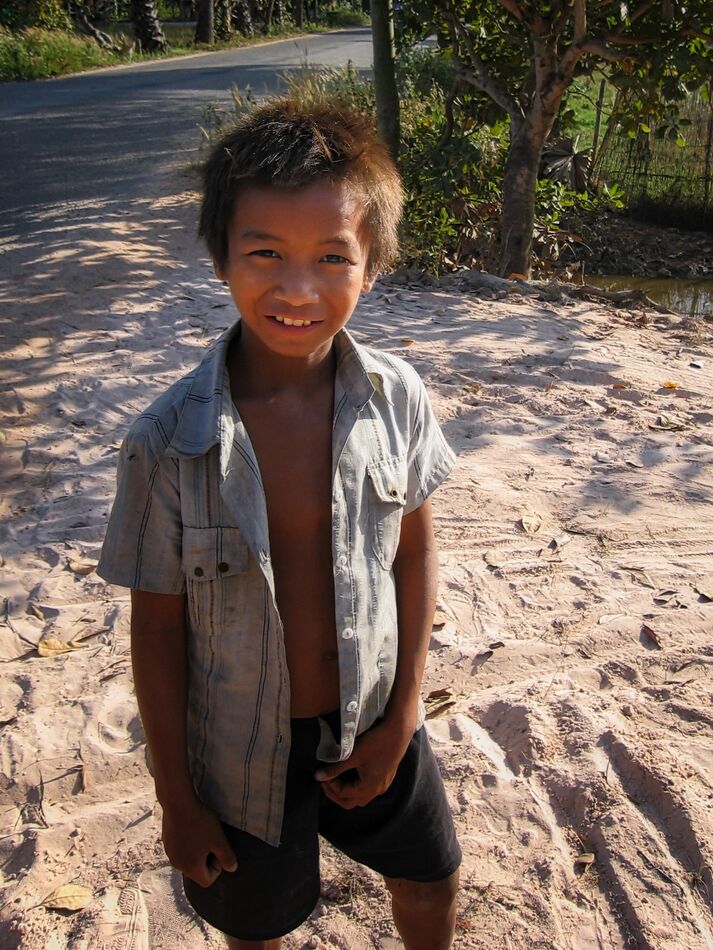
(Download)
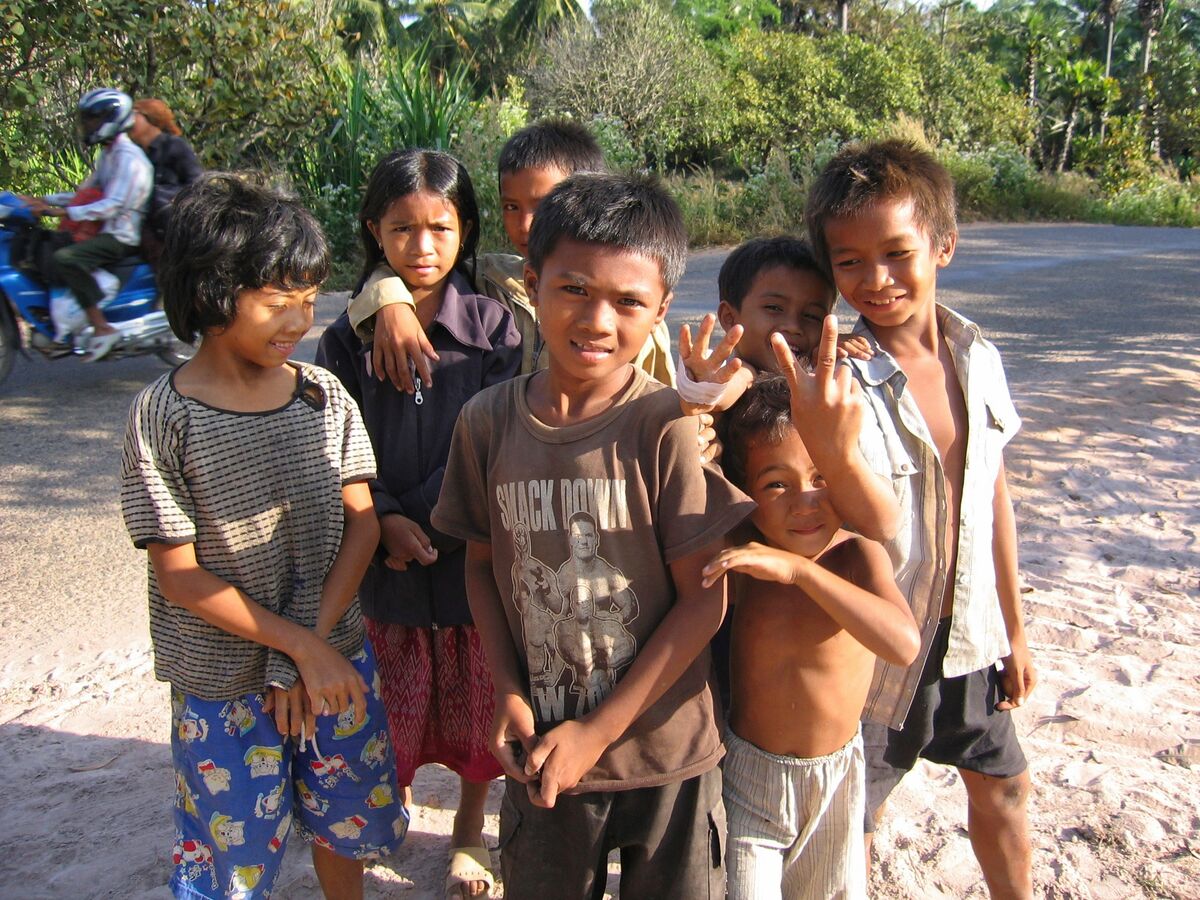
(Download)
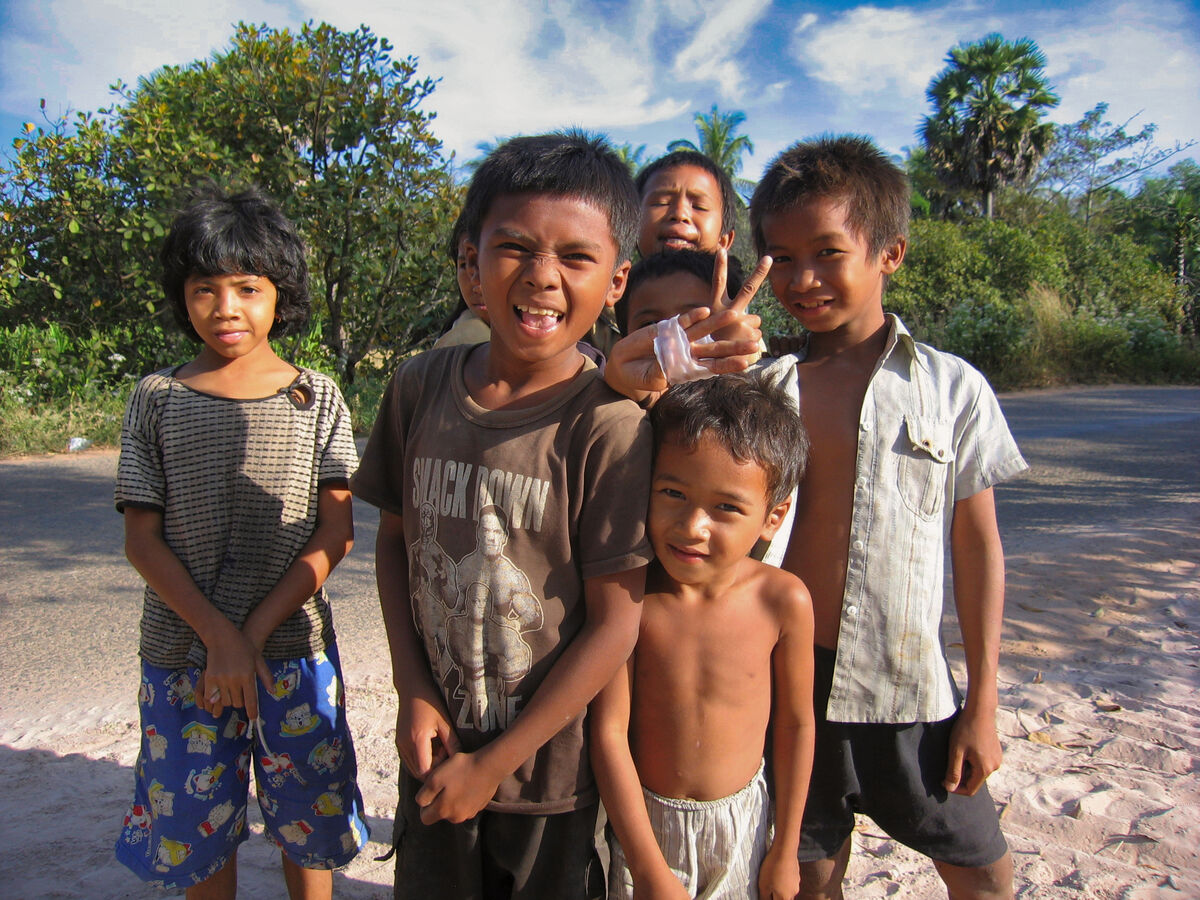
(Download)
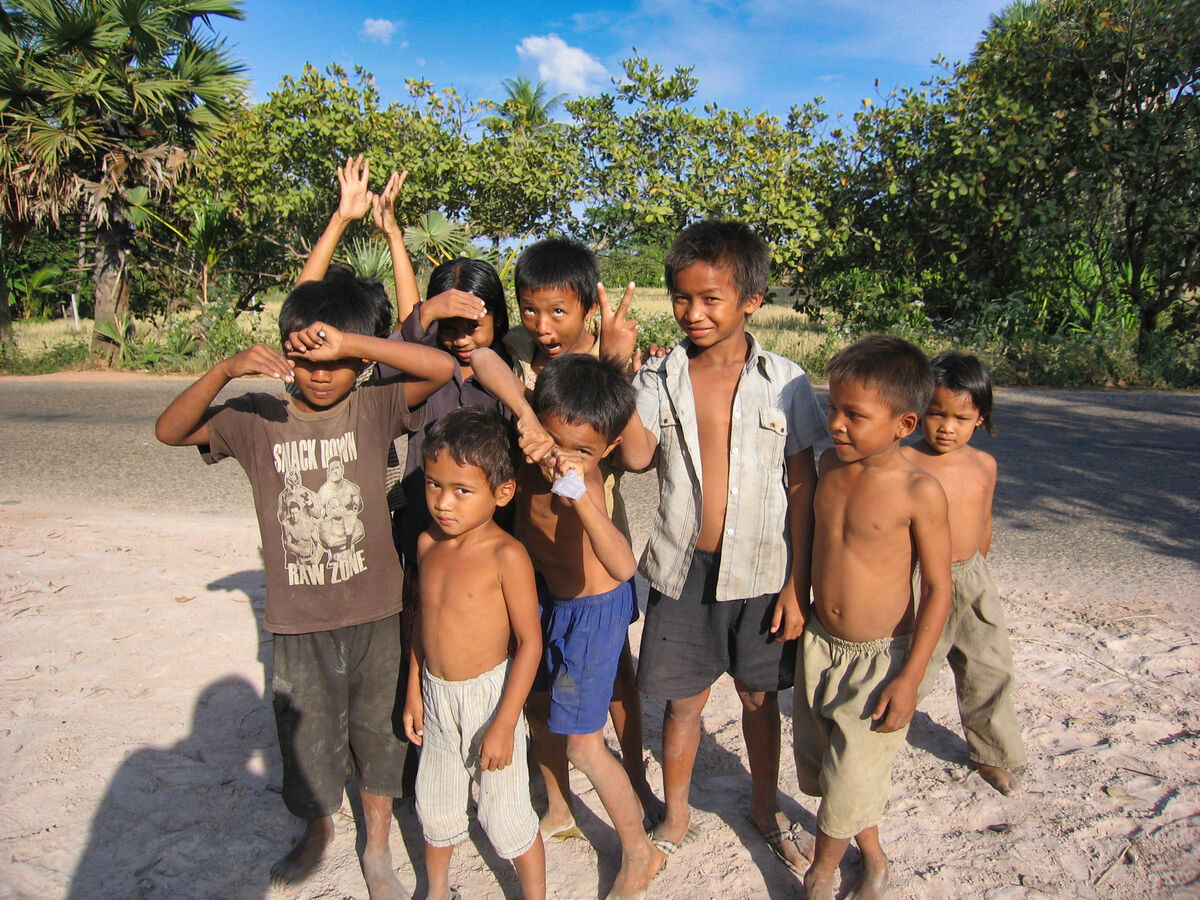
(Download)
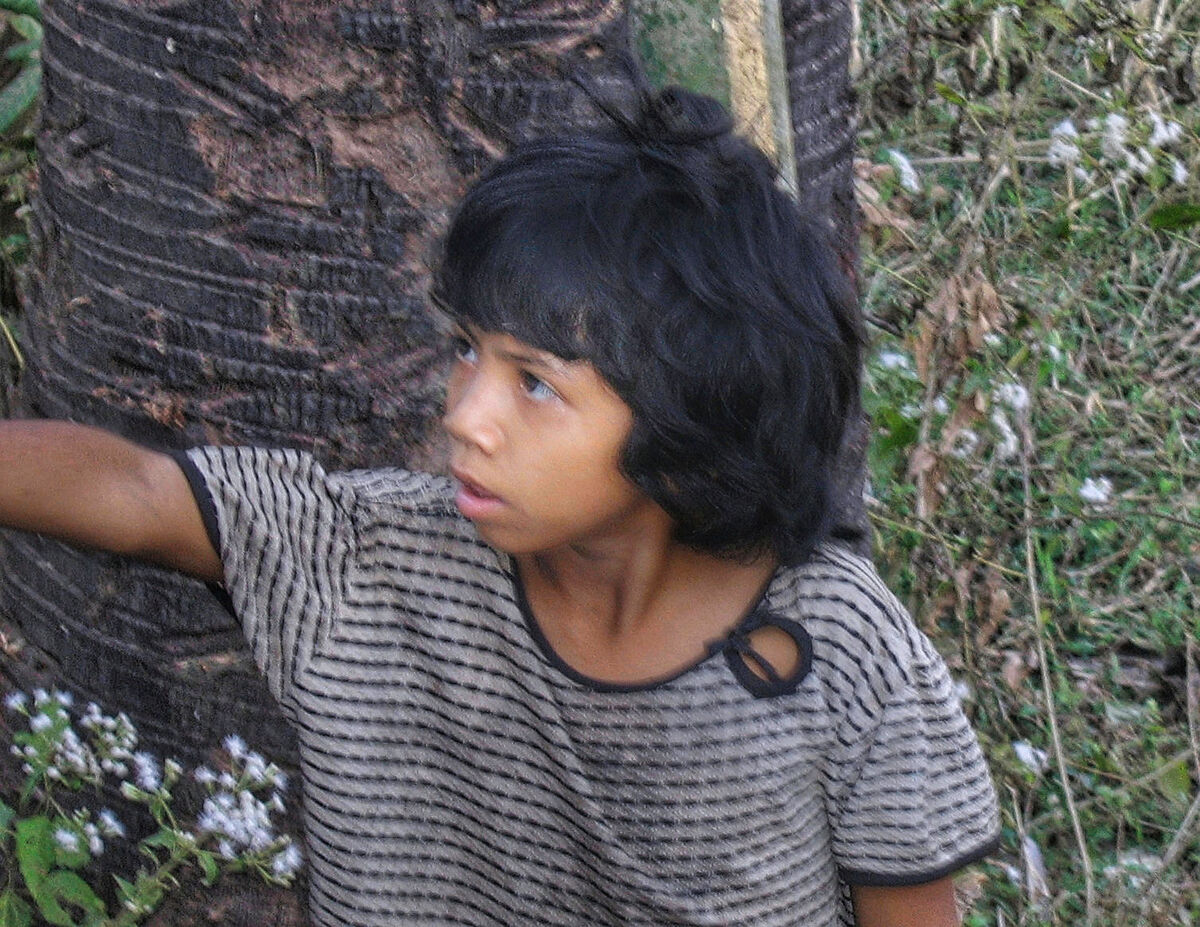
(Download)
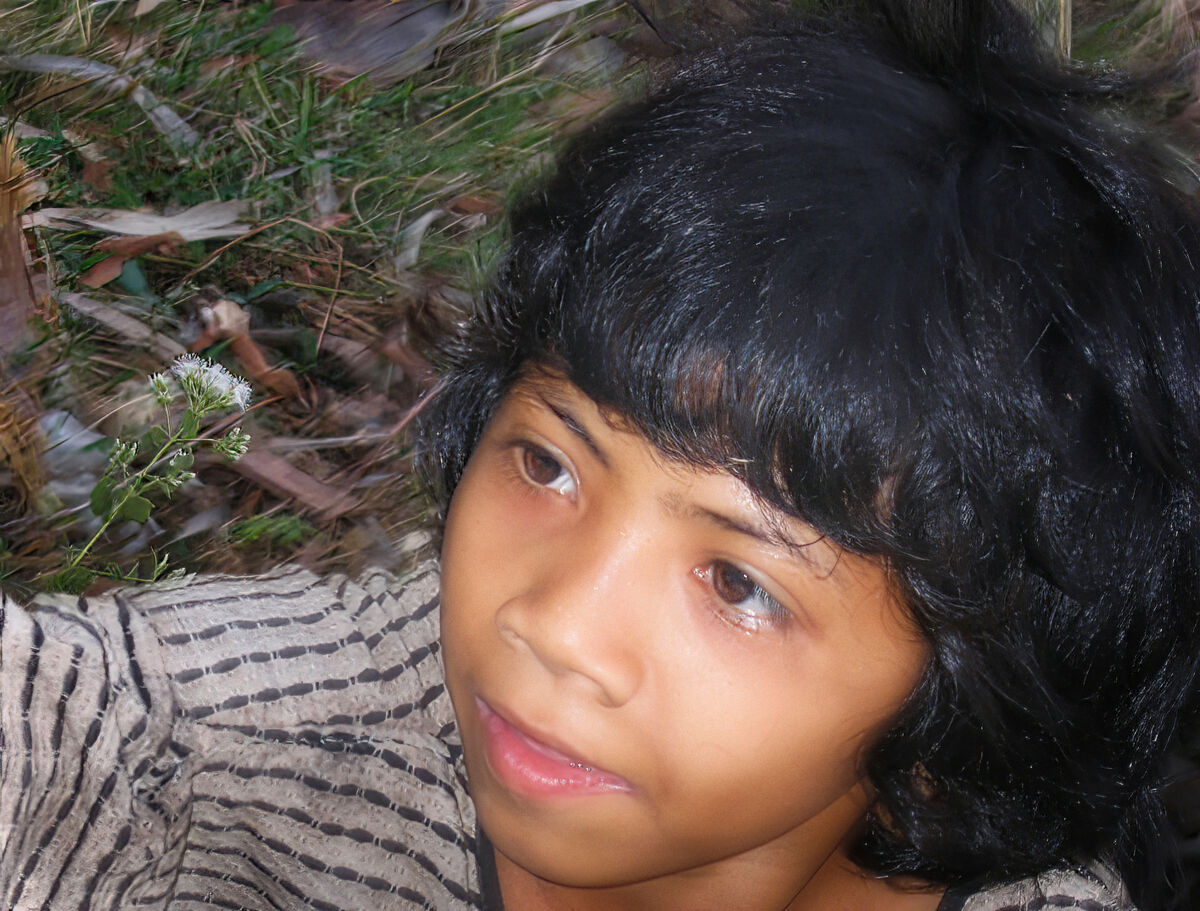
(Download)
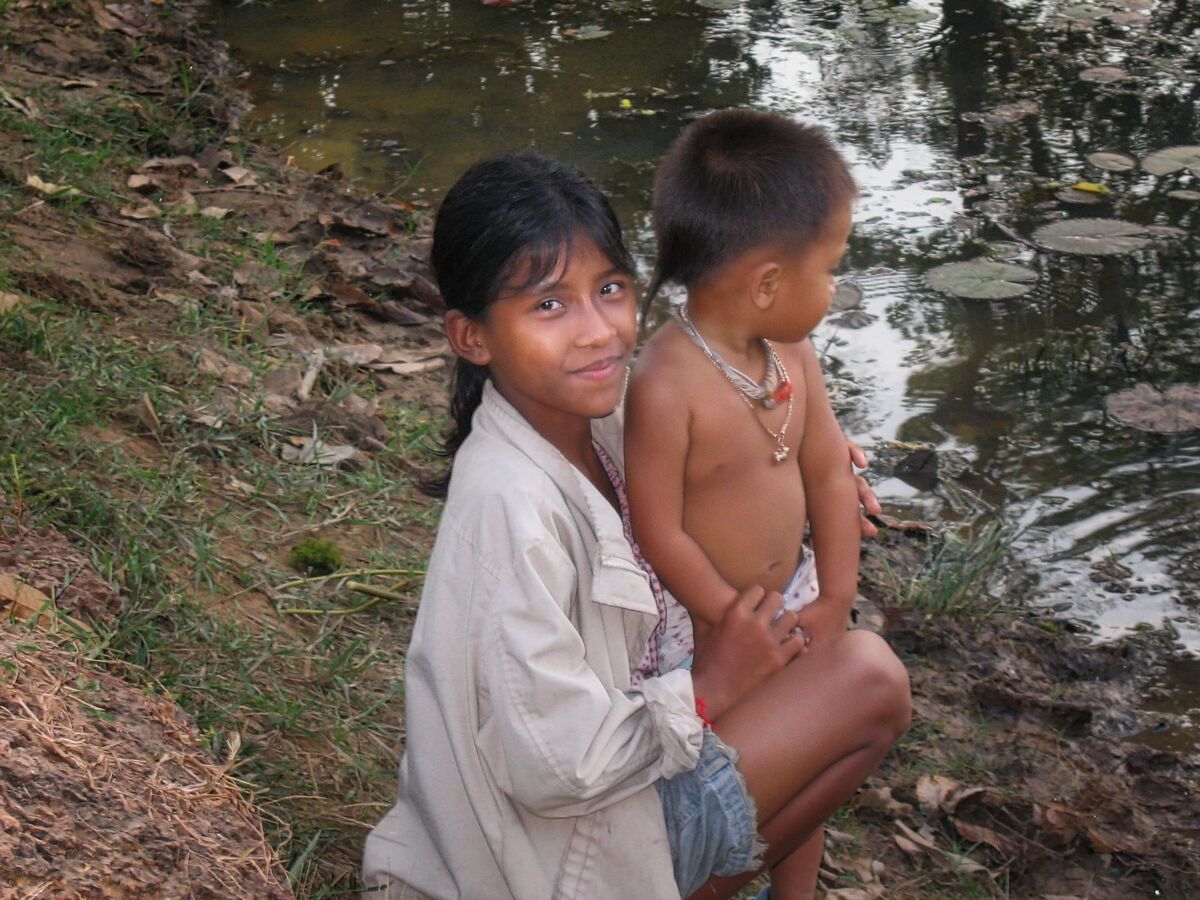
(Download)
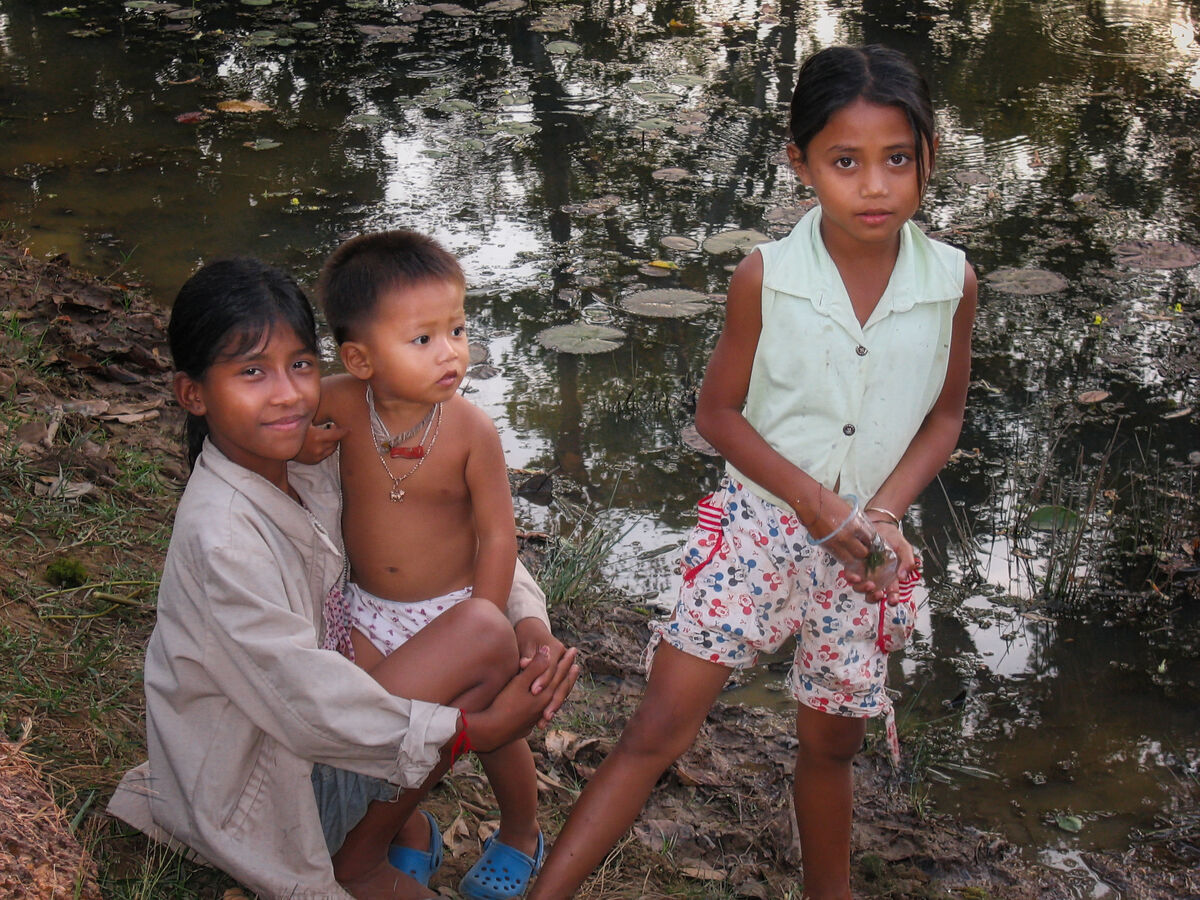
(Download)
Dec 27, 2022 16:13:47 #
Dec 27, 2022 16:14:00 #
Dec 27, 2022 16:31:51 #
Dec 27, 2022 16:50:49 #
Dec 27, 2022 16:55:50 #
Very interesting. Sometimes I think I learn a lot more than just photography here. Thanks -- lots I did not know about the people and the region.
Dec 27, 2022 16:58:48 #
Dec 27, 2022 16:59:13 #
Dec 27, 2022 16:59:59 #
angler wrote:
Lovely set Mark the youngsters look like they’re enjoying your company
Thanks very much Jim. They tolerate me but they love Gail!
Dec 27, 2022 17:01:48 #
Steved3604 wrote:
Very interesting. Sometimes I think I learn a lot more than just photography here. Thanks -- lots I did not know about the people and the region.
Thanks very much for your kind comments Steve. I'm amazed by what I learn doing the research for the posts!
Dec 27, 2022 17:31:21 #
Fabulous set, Mark. Very nicely done. Thanks for sharing the story also. Gail does seem to have a Pied Piper effect with the children. I can see in her face how much she enjoys it, beautiful.
Dec 27, 2022 18:06:50 #
joehel2 wrote:
Fabulous set, Mark. Very nicely done. Thanks for sharing the story also. Gail does seem to have a Pied Piper effect with the children. I can see in her face how much she enjoys it, beautiful.
Thanks so much Joe. I wouldn't get the great kid pictures without her!
Dec 27, 2022 22:17:23 #
srfmhg wrote:
Throughout our travels, I always loved taking pict... (show quote)
You captured the kids well Mark. Great set!
Dec 27, 2022 23:20:26 #
Dec 28, 2022 01:01:35 #
DJphoto wrote:
You captured the kids well Mark. Great set!
Thanks so much Dennis.
If you want to reply, then register here. Registration is free and your account is created instantly, so you can post right away.

